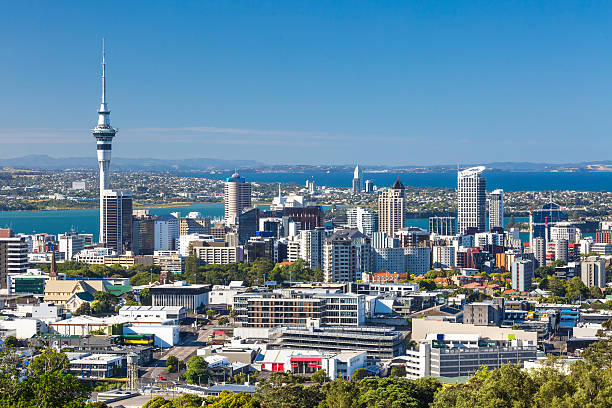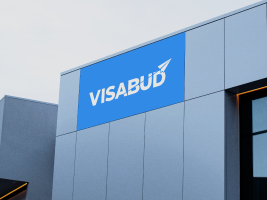Sudan Travel Guide: All you need to know to visit Sudan in 2024
Welcome to Sudan
Sudan
Ancient civilizations and breathtaking scenery coexist in the enchanted region of Sudan, where every visitor will experience a genuine welcome. This trip guide is your starting point for discovering Northeast Africa’s undiscovered beauty. Set off on a trip through time as you travel across legendary Sudan, a country that is home to a diverse range of historical, cultural, and natural attractions.
Document checklist for Sudan
Valid Passport: at least six months beyond your intended stay in Sudan.
Visa
Flight Tickets
Travel Insurance
Accommodation Details
Travel Itinerary
Vaccination Certificate
Essential Sudan travel information
Currency – The currency of Sudan is the Sudanese Pound (SDG). 1 USD is equal to 601.50 SDG.
Daily budget for one person – 1,500 SDG to 5,000 SDG
Language – The official language of Sudan is Arabic.
Top 3 cities to visit – Khartoum, Omdurman, Kassala
Top 3 landmarks/monuments – Pyramids of Meroe, Jebel Barkal, Nuri Pyramids
Socket type – The electrical plugs in Sudan are Type C and Type D. 230V supply voltage, and 50Hz frequency are the norms for operation in Sudan.
Time zone – Sudan is in the East Africa Time (EAT) zone, UTC+3.
Typical costs and budget for Sudan
Daily spending – 1,500 SDG to 5,000 SDG
Meals – 50 to 150 SDG per person
Transport – 5 to 20 SDG per ride.
Hotel – 300 to 1,000 SDG per night.
Transport and best ways to travel around Sudan
Given the size of Sudan, your transportation options may differ based on the area you’re visiting and the infrastructure that is in place at the time.
Sudan has several domestic airports that link its major cities. Flying is a practical choice if you need to go considerable distances swiftly. Carriers, including Sudan Airways and Badr Airlines, offer domestic flights.
Buses are a well-liked means of transportation for both short- and long-distance trips between cities and villages. Though sometimes the road conditions may not be ideal, be ready for lengthier journey durations.
Some of the largest cities, including Khartoum, Atbara, and Wadi Halfa, are connected by a meager railway network in Sudan. If they run along your route, trains may be a relaxing and picturesque mode of transportation.
You could have greater freedom to go at your leisure by renting a car or hailing a cab. Taxis and ride-hailing services are available in cities and are a practical means of local transportation.
Safety in Sudan
Over the years, Sudan has suffered both political instability and civil unrest. Longtime leader Omar al-Bashir resigned in 2019 as a consequence of protests. A provisional administration was established afterward, but political turmoil and protests were still possible.
Armed conflicts and violence have impacted several areas of Sudan, including Darfur, Blue Nile, and South Kordofan. Due to the likelihood of violence and insecurity, these regions should be avoided.
Urban environments are susceptible to petty crime like pickpocketing and stealing, especially in busy locations like marketplaces and public transit. Visitors should take precautions and watch out for their goods.
Terrorist attacks have occurred in Sudan; they mainly targeted government and military facilities. In such circumstances, foreigners may be at risk. Thus, it’s critical to understand the current security situation.
Weather in Sudan
Sudan is a sizable nation in northeastern Africa with a primarily dry and desert-like climate. It has hot weather all year round, with April to June often being the warmest time of year. In many places, the temperature may rise considerably beyond 40°C (104°F) during this period.
If you’re considering visiting Sudan, you should be ready for the intense heat and take the necessary precautions to remain hydrated and protect yourself from the sun.
Famous Cities and Towns in Sudan
Khartoum: At the Blue Nile and White Nile meeting point, it serves as the country’s capital and most significant metropolis.
Omdurman: Omdurman, the second-largest city in Sudan and a component of the Khartoum metropolitan region is situated directly over the Nile from Khartoum.
Nyala: It is a significant city in the Darfur area of western Sudan and the administrative center of South Darfur state.
Must do and see in Sudan
Pyramids of Meroe: More than 200 pyramids may be seen in the ancient city of Meroe, which lies close to the Nile River. These pyramids, built during the Kingdom of Kush, are a magnificent sight to see.
Jebel Barkal: Jebel Barkal is a significant archaeological and UNESCO World Heritage Site. Ancient cultures revered this peak, which is ringed by temples and pyramids.
Khartoum: The Sudanese capital, Khartoum, is a busy metropolis where you may learn about the contemporary culture of the nation, visit marketplaces and museums, and take in the sight of the meeting point of the Blue and White Niles.
Nile River Cruises: It offers an opportunity to explore traditional communities, animals, and historic temples along the riverbanks is provided by a boat along the Nile River.
Typical Sudan food to try
Kisra: Kisra is a thin flatbread made from fermented sorghum, an everyday staple in Sudan. It is typically served with a variety of sauces and stews.
Ful Medames: It is prepared with fava beans and is seasoned with olive oil, onions, tomatoes, and spices, just like the South Sudanese version. It is a typical breakfast item.
Mulukhiyah: The Corchorus plant’s leaves are used to make this tasty and healthy soup. It is frequently prepared with beef and offered with rice or kisra.
Fun facts about Sudan
- The ancient Nubian civilization formerly existed in Sudan’s northern region.
- There are more pyramids in Sudan than in Egypt!
- One of the first writing systems in Africa was the Meroitic script, which was employed in the ancient Kingdom of Kush.
Related Articles

5 min read
New Zealand Introduces Key Changes to Post Study Work Visa : What You Should Know
According to the government, this change will provide students with greater flexibility in their academic choices while ensuring they remain eligible to work. For many students, studying abroad is a
Read More
5 min read
The Singapore visa processing time for Indian citizens
Singapore is a small island located in the Malay Peninsula in Southeast Asia. It is one of the most economically developed countries in the world. Singapore is a fantastic place
Read More
5 min read
How Much Does an Australia Trip Cost from India?
If you are planning a trip from India to Australia, you must follow some of the points. that are : Planning Budget Traveling date and time To which place you
Read MoreThe earliest time to submit a Sudan visa application is one month before the intended travel date. It is advised that all visa applications be filed ten days before departure to enable enough time for visa processing.
The duration of this visa is 30 days. Depending on the reason for your travel and the type of visa you have, the Embassy will determine the validity and stay time.
The actual Passport will be stamped with the visa by the Embassy. The Passport must thus include two blank pages. Additionally, the validity of your Passport should extend at least six months beyond the desired stay.
Usually, it takes 4 working days to process a visa application.
On your Passport, the visa will be stamped.
